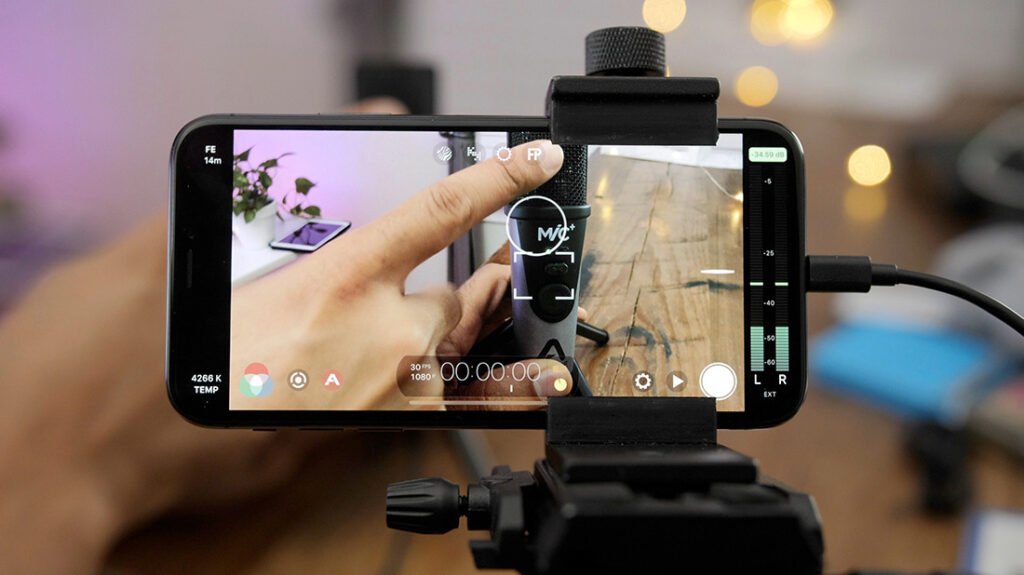A handy step-by-step guide for making your first film - Part 4

Advances in technology put everything within your reach. Broadcast TV, Commercial Agencies, and Hollywood filmmakers still spend thousands, if not millions, on cameras, lighting, and sound in order to capture their films. This equipment then requires them to engage operators with extensive technical expertise and immense craft skills to operate it.
Nothing wrong in doing what they do but if you are making your first film you need to understand that this approach comes from a ‘mindset’ that stems from a time gone by where the tech meant it was the only way of doing things.
If it is still happening today it's mostly because people, inherently, still believe that - bigger budget + bigger camera + bigger crew = bigger and better film.

You, however, live in a time where advances in technology mean you can adopt a different ‘mindset’ if you want to.
Truly you only need a mobile phone to get started, because now mobile phones such as the iPhone 12 Pro Max give you four different cameras in one device, records your sound, records your footage, allows you to control the picture quality settings and they are so easy to use that you can start filming from their unboxing.
In making things easier for you, the builders of mobile phones have also made a lot of quality decisions on your behalf. Mostly, they are good decisions and produce great results with minimum effort on your part but they may not be what you want for your film.
To have more quality control and make the creative choices that you want, there are lots of options for you to consider - but only when you are ready to do so.
Quality of your picture
FiLMiC Pro is a software package that you can purchase, install onto your phone and it will give you all the manual control you will ever need; white balance, ISO, frame rates, focus, resolution, exposure settings and much more will all be under your control if you want it.

Like all software, FiLMiC Pro will take you a bit of familiarisation but for those who want to have full creative control over their shots, this learning curve is essential. FiLMiC Pro is not alone in the marketplace and you should always check out similar software to find the one that's best suited for you when making your first film.
Quality of your sound
Although the native sound recording of the iPhone 12 Pro Max is good it can be improved by adding an external microphone to your mobile phone. Make sure you have the right connector to plug your microphone of choice directly into your device e.g. with the iPhone 12 Pro Max you need to have a lighting connector on the end of your microphone lead in order to get the sound into your phone.
FiLMiC Pro has a good range of audio quality controls built into its software and these will help you capture sound the way you want them to.
Quality camera movement
Mobile phones all have built-in stabilization that helps keep things steady when you are shooting video on the move but a lot depends on just how you want to move. This is such a handy advancement for when you are making your first film.
Handheld is one way of introducing movement to your shots. It's when you are holding your phone in your hand and are simply walking around. Whether it's a short or a long walk the built-in stabilization really helps stop wobbly frames appearing in your shots. The unwanted movement in a handheld shot is often seen top to the bottom of the frame. And this is because of how our body moves when we walk.
There is a technique for walking that helps when you do a handheld shot: it's called baby steps. If you practice walking heel to toe when doing a handheld shot - you can greatly reduce the amount of stabilization support your mobile device phone will have to do.
Pan and Tilt can be done as handheld and once again things are often improved by the built-in stabilization. The better alternative is to use a phone clamp mounted on a tripod and fitted with a pan and tilt arm. Unwanted movement during a pan or tilt is very often only noticed in the edit because the screen size on a mobile phone is so small. Just know Pan and Tilt moves are very difficult to execute well and you should get lots of practice. Don’t try to learn this skill on the job.
Extremes of movement are when you might be running, on a boat, in a vehicle on a bumpy road, or other situations where the environment is introducing unwanted movement. This is when you should consider one of the handheld gimbal devices like Osmo 3 or Movi Cinema Robot. They are designed to carry your iPhone and keep things steady. While they will take a bit of practice at first - especially getting it balanced - the results are impressive. There are lots of gimbals in the marketplace so make sure you do your research to find the one that's right for you.
Remember - you only need a mobile phone to get started on making your first film!
If you have any questions e-mail us at [email protected] or call us on 0131 226 0226 to see if we can offer you support with making your first film. Also check out the rest of our website at lamedia.co.uk



